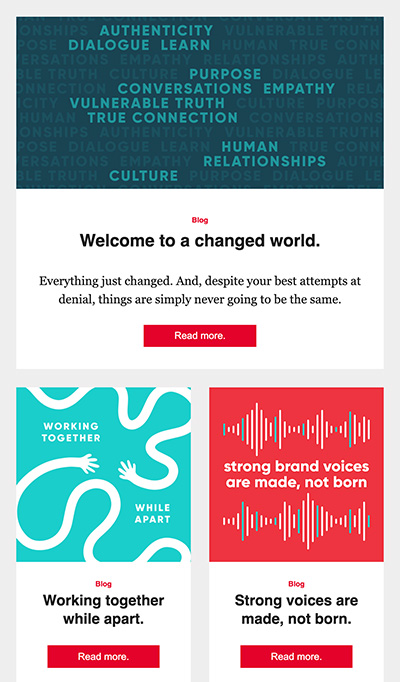The Narrative – A Data Analyst’s Best Friend
How data can enable better relationships with customers, empower marketers, and embolden business.

Data analytics. Those two words can put even the most engaged marketers’ minds to sleep. But it doesn’t have to be that way: data should enable better relationships with customers, empower marketers to ask the right questions, and embolden businesses to think and act bigger. Understanding audiences is key to creating an even playing field, and data is the great equalizer.
The difficulty is that data, in the way it’s often presented, can be isolating. And for many, it can feel like a completely different language. Moving averages, standard deviations, statistical anomalies — half the time spent looking at data is used to translate it into something accessible (read: normal), and many times, it fails to register with its audience. Data succeeds when it’s rooted in something real. Something actionable.
If we rethink how people engage with data, we can revitalize the efficacy of reporting, with storytelling as the backbone. Finding the story in your data can be easy. All the parts are there. It’s just a matter of bringing them all together in a concise and compelling manner.
1. Find what matters most.
There’s a lot of data to digest, and digging through it can be laborious. Your guiding light in filtering which data matters should always be your key performance indicators (KPIs). Identifying the right KPIs should boil down to one question: which numbers tell us whether we achieved our goal? Once you have them, your journey is drastically simplified.
2. Add context.
It’s great when you report a 250% increase in conversions quarter over quarter. Perfect — you’re in the black. But how did you get there? Adding context to data as a traditional narrative will help you (and your audience) understand your successes and failures. Identifying what works, why, and what we can do better next time. If you’re able to work your way back from the end result, you can see what variables were introduced along the way, when improvements happened, and how they impacted your KPIs.
3. Make it relatable to your audience.
Data is layered and nuanced. But reporting anything and everything that affects the brand becomes monotonous and ultimately ineffective. As a storyteller, it’s your job to say what’s important and why. Don’t convolute your point by adding irrelevant statistics for the sake of inclusivity. KPIs tell us whether we achieved our objective, which is what your audience wants to hear.
Data is paramount to a successful brand, but it’s insufficient when isolated. Data doesn’t have to be boring. If you frame it the right way, it can even leave you on the edge of your seat. When you and your team are able to fully map what’s behind the data, and why it matters, you’ll be able to avoid pitfalls and reach your goals much more confidently.


